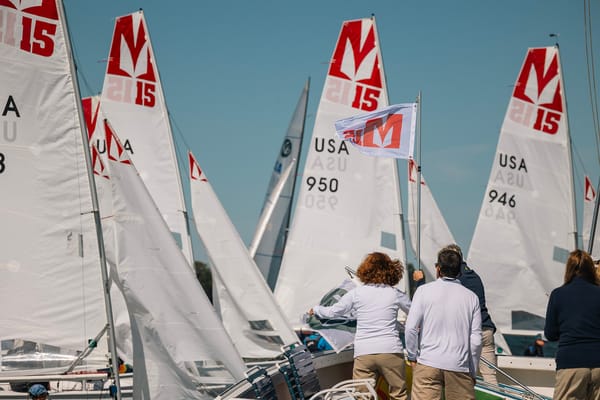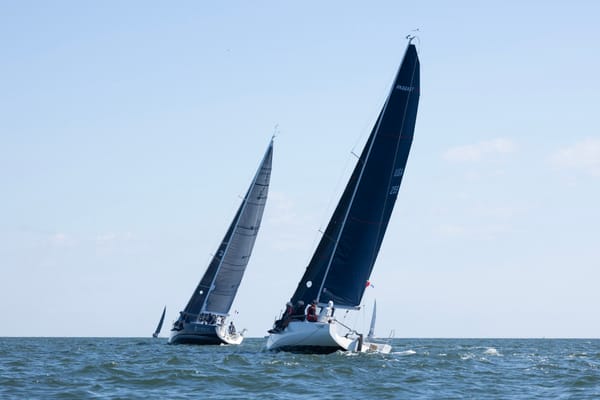AYC at the Baldwin Cup
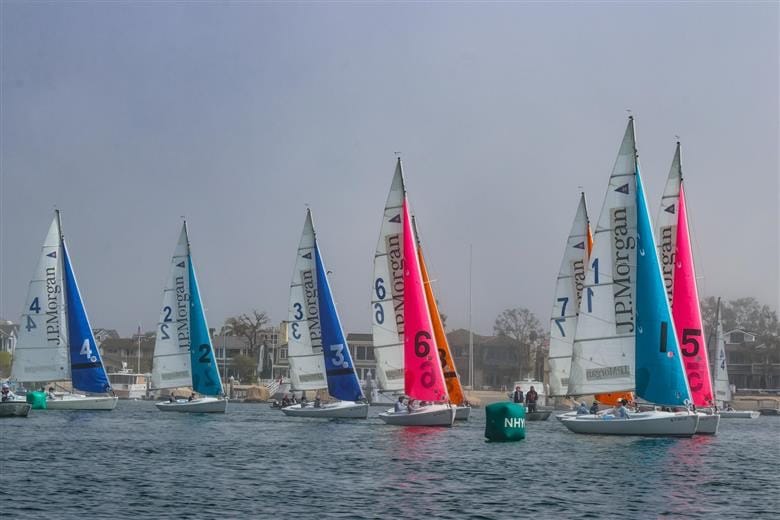
AYC sent a team of four talented young sailors to represent the club at the Baldwin Cup at Newport Harbor Yacht Club over April 10th-12th. The team, including Austen Freda, Audrey Fung, Michelle Lahrkamp and Lindsay Powers, put in an amazing performance and were thrilled to represent AYC, where each team member first learned to sail, at such a high caliber event. Bell 42 caught up with two team members - Austen Freda and Michelle Lahrkamp - to hear more about their experience at the Baldwin.
Bell 42: First of all, congratulations on racing in the Baldwin Cup. How did it feel to compete in such a prestigious event?
AF: I grew up at AYC, learning to sail, so it was nice to have it come full circle for me, to be able to compete at the national level, for the club.
ML: It was really fun. I didn’t really know the level of the Baldwin at first, just because there are so many events in adult sailing. And then I started looking at the Notice of Race and I thought, hold on, this is the real deal. This is a world’s qualifier. And then I had to mentally prepare again. But it was really fun. The group we went with was a really high level AYC team and it was really fun to sail for AYC again. The club has such a special place in my heart - that’s where I learned how to sail. To go back and start sailing for the community again was really special.
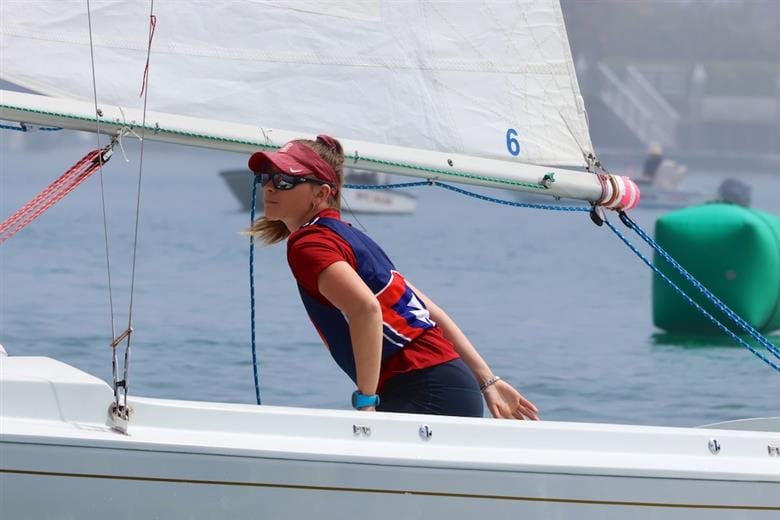
Bell 42: What sort of training did you do to prepare?
AF: Since Michelle and I both live in Manhattan, we met up a couple times at coffee shops and went over some situational things. And then the three weekends leading up to the regatta, we did some 2v 2 practices out of Larchmont, because Larchmont also competed in the Baldwin Cup.
ML: During the three weekends in a row of 2v2 practice at Larchmont, we sailed in Ideal 18s, which are a pretty good representation of the Harbor 20s, which we sailed in at the Baldwin. But the rule in the Harbor 20s is that you can’t sit on the rail, you have to sit on the cushions, inside, so when we were practicing, we started sitting inside and we realized how difficult it is, because your field of view and maneuverability with the rudder is very different if you’re sitting on the cushions. That was a hard adjustment, but in the end, it was a lot of fun.
During the practices at Larchmont, they were also taking drone footage, so we would review the drone footage and then send each other notes.
I think we realized what a competitive event it would be, and we wanted to be prepared, especially because AYC was backing our application and our funding.
Bell 42: Was there anything that you felt gave you an advantage going into the event? Anything you did in training or unique experience you had?
AF: I think it was really helpful that Michelle and I both live in NYC and we got to practice together those three weekends at Larchmont. And also getting better off the water. We would go over how to approach different situations, and I felt like that was very helpful, because we were on the same page when certain situations would come up in the regatta. I really tried to think through every possible detail of the whole event, just sitting at my kitchen table, trying to cover every possible situation.
Logistically, the event was very smooth. Credit to the club and how they supported us through that, because that was incredibly helpful. And our host family was great. They had a house directly across from the club and they called a launch for us every morning.
I was very grateful to be with Lindsay, Audrey and Michelle. They’re incredibly talented sailors, very kind people and really a lot of fun to spend time with.
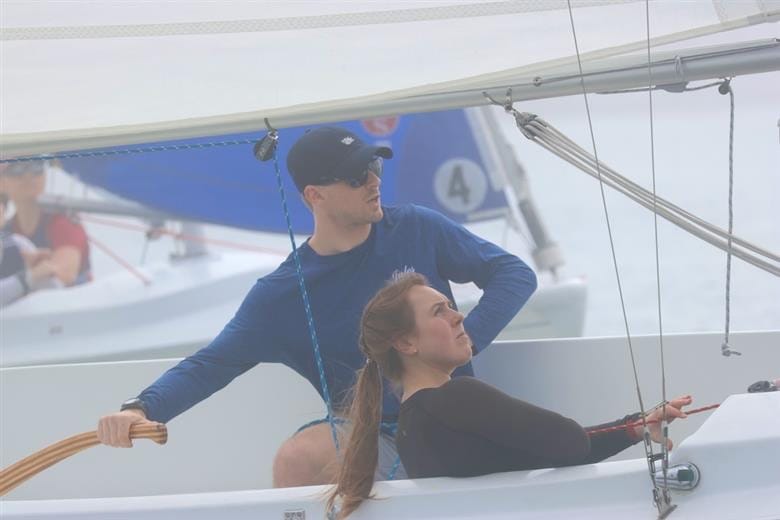
Bell 42: What were some of the challenges you faced, either in training or in the race?
AF: The boats out there, the Harbor 20s, are really particular. They really only sail them there. They’re like cocktail boats. They’re very slow and they take a long time to accelerate. This was by far the most competitive regatta of my life, so it was funny, competing in these boats, because they’re basically meant for sunset harbor cruises. So that was a little tricky.
And also the competition was very steep. Every race felt extremely taxing, and then it would be the next race already.
ML: The wind was a challenge. It was very light, we never really got above 6 knots. And there was a sea fog that would come in and take forever to burn off in the mornings. Of course, these are things you can’t control.
They were running a Swiss League, which is a pretty good system, but the key is that you need to get a lot of races, probably double the amount we actually got. As a team, we came out swinging. We were rushing it the first couple sets, which meant we had to go against the winners multiple times. So for at least three or four races, we had to go against the top teams. We actually did really well against them - we actually beat a couple of the top teams.
But the key in the Swiss League is to avoid peaking early. And we peaked early. There was a team that had lost the first two races and were in the bottom bracket, and then they started winning, because they were up against an easier schedule. And they ended up getting into the top eight at the end.
I’m definitely not saying to lose races on purpose. It’s just that at the start of the rotation, if you’re up against hard teams and you start beating them, that’s great, but then you’re up against a very difficult schedule. We actually raced multiple times against the team that ended up winning, which was great practice, but we never raced against teams that were more our level. I think that’s fairly rare in a Swiss League. Typically, you’d sail against 70% of the teams, if you’re winning and losing. We were definitely competing with the top third and right on the cusp there, but we never really saw the bottom. It’s something you can’t really control, but in an ideal world, we would have had more races, and they have run more races in the past.
Bell 42: What were some high moments from the event?
AF: High moment for me had to be putting on the AYC pinnie for the first time since junior sailing.
Also, the event in general was extremely well run, extremely organized. They pulled about 700 moorings for the event, right in their harbor. It was very clear that every detail was thought out. And the sum of those parts was pretty spectacular.
I guess another real highlight for me was that I feel like we sailed pretty well. A lot of teams came up to us and said, ‘Wow, you guys were really good. Where’s American Yacht Club?’ So I appreciated that. And I think we represented the club well.
ML: There were a lot of high moments for me. We had some really close races, and it’s always more fun when it’s super close and you work really hard and end up with the win. There was one race where we kept rotating on the downwind and repositioning and Austen and I were so in tune and we just knew, we have to stay in this constant flow and then eventually, one of us will get in a good enough position, wait for the other team to make a mistake and capitalize on it. So that’s basically what happened. We kept rotating around, very in tune with one another, until the other team made a mistake, and then we finished. That was a high moment.
Bell 42: Is there anything else you’d like to add?
AF: At the end of the day, the bottom and the top were separated by a handful of races. I knew going in that this was gonna be a bit of a marathon. And it was pretty special to beat some of the teams we beat. We were proud to come out ahead of some great clubs, like New York, Eastern and Larchmont. We were one of only two clubs that had never done the Baldwin before. They announced that at the post-awards meeting. It was a pretty incredible thing to do for the first time with AYC and I’m hoping we can continue to be a force at that level, going forward.
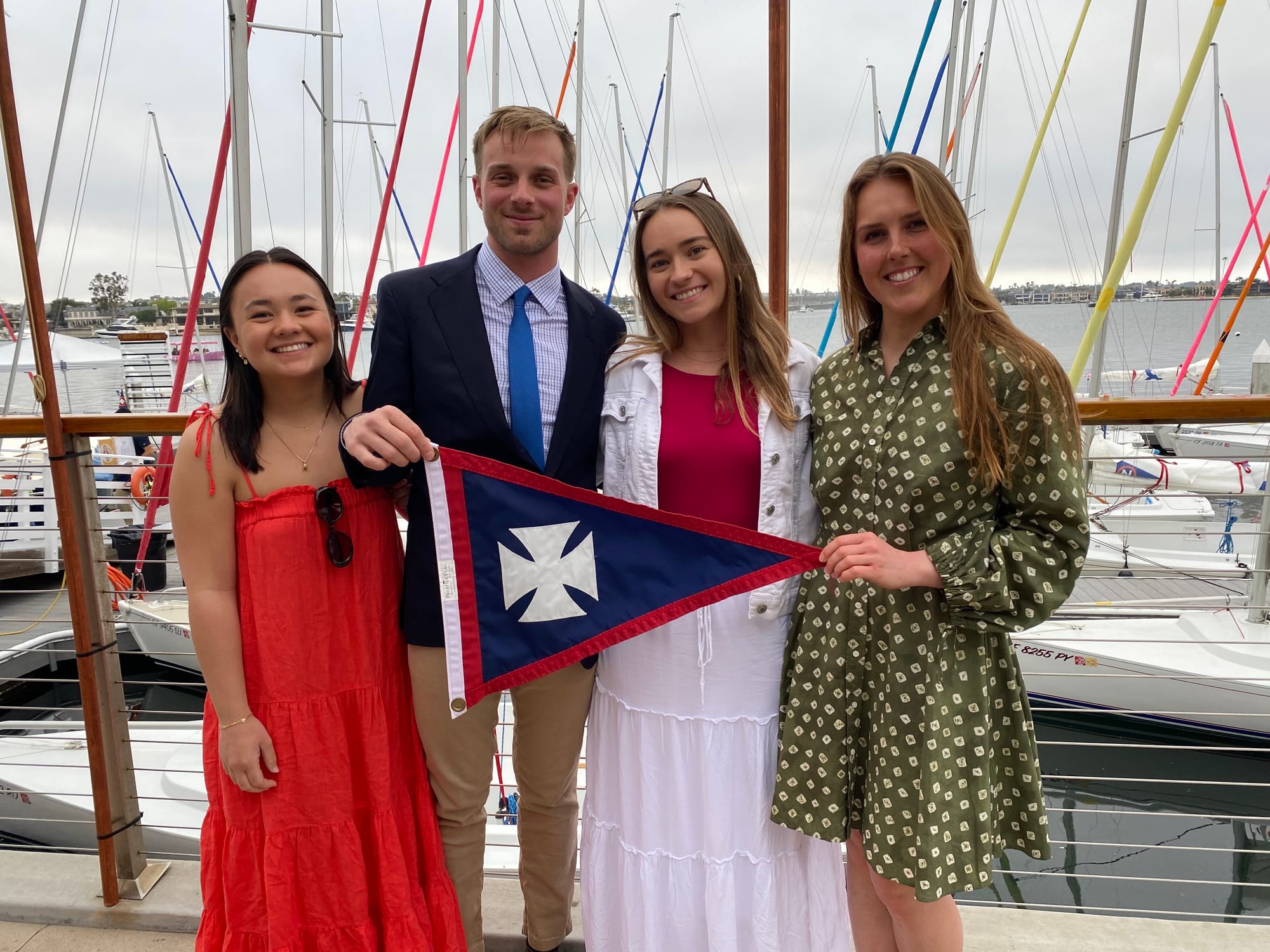
ML:The Baldwin Cup is a very prestigious event and it’s nice to get AYC back on the map at these types of events. We have a lot of young members and I think Austen and I definitely want to get them more involved. We’re sailing the Young Guns and also the Lee, and I think we’re gonna try to get as many people out on the water as possible. Those are 3v3 team races, in Sonars, with kites, so very different. We’re definitely gonna be doing some practices for those. We’ll practice at AYC, against Larchmont. Austen and I are pretty connected to the young members at Larchmont, so we said to them, let’s get our boats and also your boats and go team race. It’s still in the works, but they welcome us every time we come and if we can bring our own Sonars and just sail against them, that’s even better.
Bell 42: This is a nice segue to talk about Austen launching Team Racing at AYC. Could you tell us about that?
AF: I knew it would be a little bit of an uphill battle. I’m hoping that we can just build a solid practice group out of here.
Bell 42: What kind of people do you have taking part?
AF: It seems like it’s a pretty good mix of people who have never really sailed much before and people who have a lot of experience. That’s kind of how I prefer it.
Bell 42: And which boats are you using?
AF: Right now, we’re using Ideals and hopefully, going forward, we’ll transition more to Sonars, once we build up that fleet a little more. Sonars are definitely a harder boat logistically, because they’ll usually need a launch, so we’re trying to figure that out. They’re also typically sailed with three to five people, whereas the Ideals, you can definitely sail with two. You can’t really do that with a Sonar. Most of the events on the national circuit are sailed in Sonars, so we need to work on that.
Sailing is a sport that you can really do at any point in life, so I’m hoping to introduce people who don’t have sailing experience. And then on the other end of the spectrum, the people who have lots of experience, I want to give them a chance to keep sailing, keep racing.
Congratulations once more to the whole Baldwin team of Austen Freda, Audrey Fung, Michelle Lahrkamp and Lindsay Powers, on representing AYC so successfully at such a top notch event.

